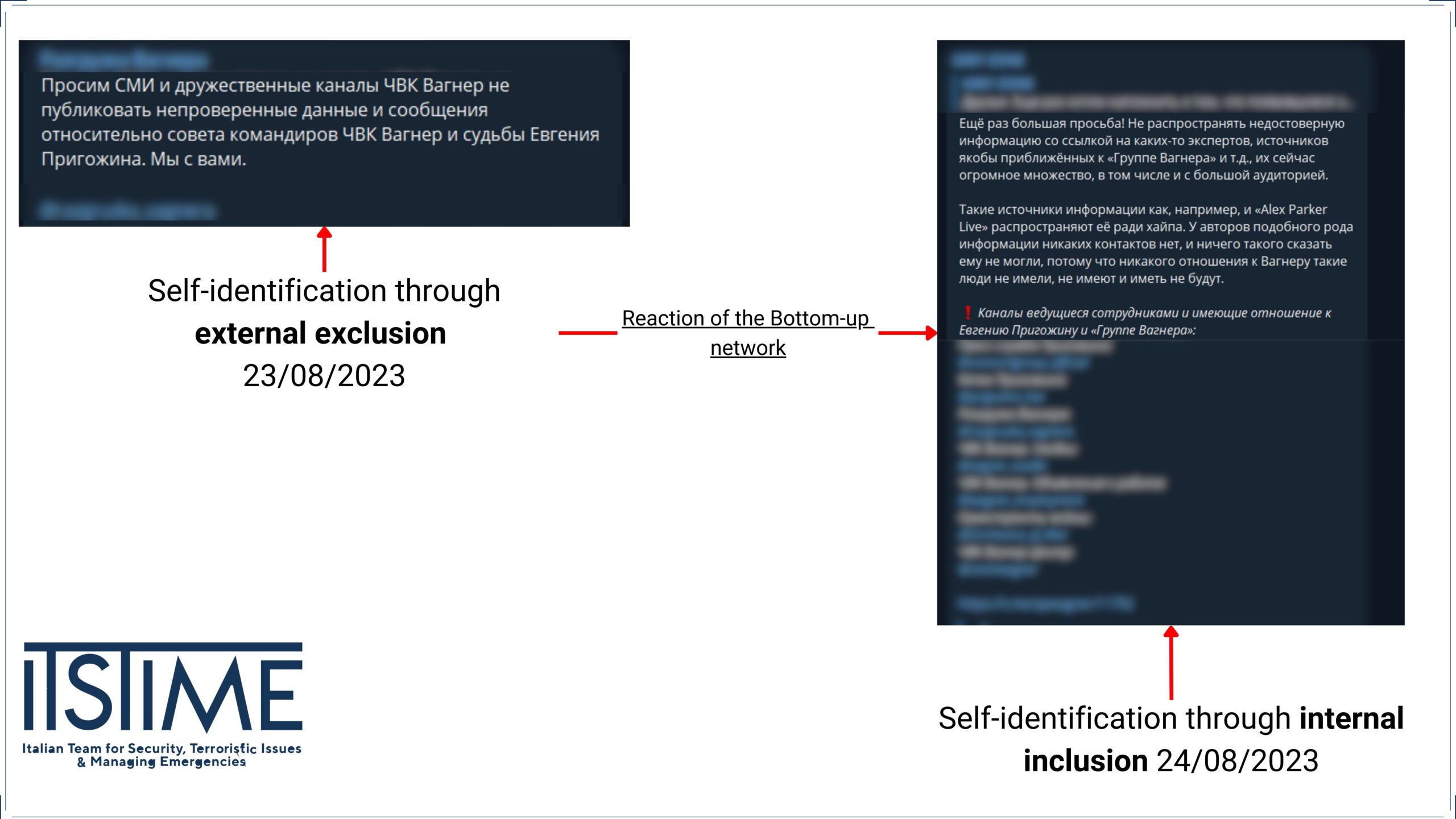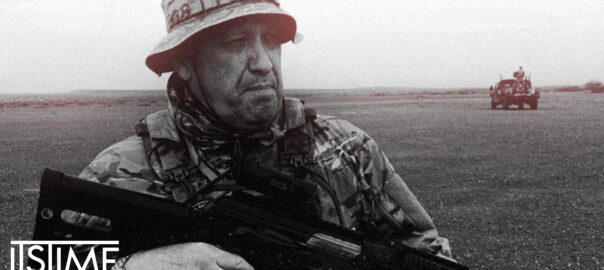After the March of Justice, announced on June 23, the evolution of the relationship between Russian President Vladimir Putin and PMC Wagner head Yevgeny Prigozhin was discussed at length. On August 23, exactly two months later, one of the private jets on which Yevgeny Prigozhin and Dmitry Utkin, considered his right hand, were traveling crashed en route between Moscow and St. Petersburg.
On the evening of August 23, a Telegram channel of PMC Wagner appealed to subscribers to be cautious about the news that was published in those hours, stating that “we ask the media and friendly channels of PMC Wagner not to publish unverified data and messages regarding the advice of the commanders of PMC Wagner and the fate of Yevgeny Prigozhin”. This announcement was repeated several times within the ecosystem in the following days.
Analyzing the digital ecosystem of PMC Wagner, for the first time, emerged the need of a clear distinction between generic news outlets and the bottom-up channels[1] composed by the only members considered trustworthy. In this sense, they tried to identify themselves excluding the external infosphere.
The next day, on August 24 at 1.55 pm, another bottom-up channel published a list defining the official Telegram channels of PMC Wagner. Assuming that the top-down component may be completely or nearly compromised, the bottom-up actors who, not coincidentally, have the most difficulty in giving themselves a structured conformation are the most active in critical situations. Thanks to the list, it was possible to find channels dedicated to recruitment, sharing propaganda materials, Prigozhin’s press service, and the channel of the Wagner Center in St. Petersburg.
The aim of such an operation is to counter the possible misinformation on the events surrounding the deaths of Prigozhin and Utkin while re-organizing the propaganda apparatus through an internal identification. This, in fact, has led to the institutionalization of these channels on Telegram, detaching themselves from the rest of the existing channels and chats managed by people not directly connected to PMC Wagner.
What was observed within the pro-Wagner digital ecosystem leads to a comparison with what happened to the pro-Daesh propaganda apparatus after its fall that occurred in the occupied territories. It is interesting to point out how bottom-up actors (Wagner) and what was then referred to as spontaneous propaganda (Daesh) implemented similar communication strategies, on the one hand highlighting the reliability of their activities and on the other giving continuity to the entire ecosystem.

[1] https://www.itstime.it/w/pmc-wagner-propaganda-ecosystem-by-giulia-porrino-federico-borgonovo/#more-8085

